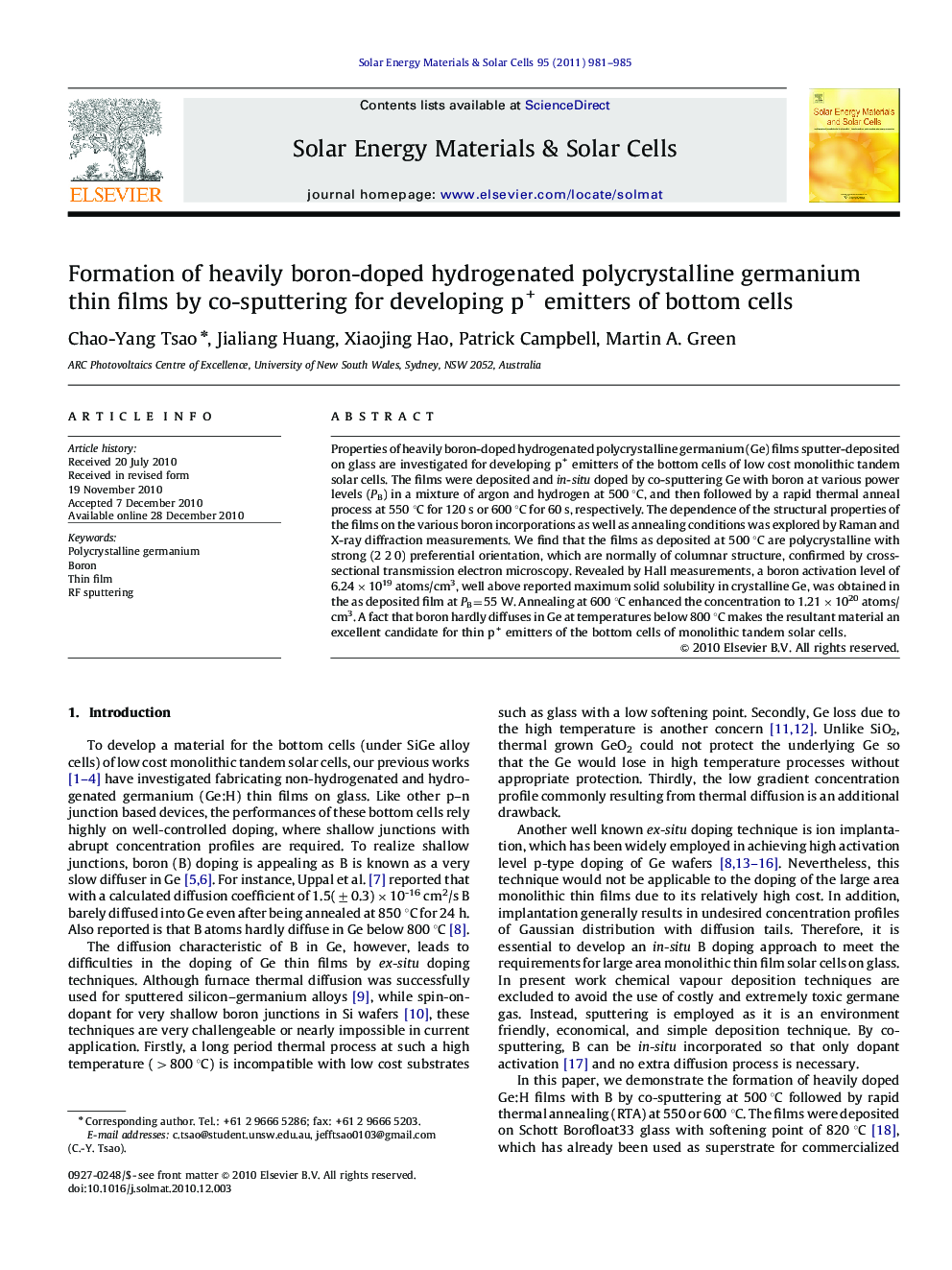| Article ID | Journal | Published Year | Pages | File Type |
|---|---|---|---|---|
| 79781 | Solar Energy Materials and Solar Cells | 2011 | 5 Pages |
Properties of heavily boron-doped hydrogenated polycrystalline germanium (Ge) films sputter-deposited on glass are investigated for developing p+ emitters of the bottom cells of low cost monolithic tandem solar cells. The films were deposited and in-situ doped by co-sputtering Ge with boron at various power levels (PB) in a mixture of argon and hydrogen at 500 °C, and then followed by a rapid thermal anneal process at 550 °C for 120 s or 600 °C for 60 s, respectively. The dependence of the structural properties of the films on the various boron incorporations as well as annealing conditions was explored by Raman and X-ray diffraction measurements. We find that the films as deposited at 500 °C are polycrystalline with strong (2 2 0) preferential orientation, which are normally of columnar structure, confirmed by cross-sectional transmission electron microscopy. Revealed by Hall measurements, a boron activation level of 6.24×1019 atoms/cm3, well above reported maximum solid solubility in crystalline Ge, was obtained in the as deposited film at PB=55 W. Annealing at 600 °C enhanced the concentration to 1.21×1020 atoms/cm3. A fact that boron hardly diffuses in Ge at temperatures below 800 °C makes the resultant material an excellent candidate for thin p+ emitters of the bottom cells of monolithic tandem solar cells.
Graphical AbstractWe have developed a novel and cost-effective approach for heavily p-type doping of Ge:H films by co-sputtering Ge with boron. The increased electrical concentration with PB indicates the Ge:H films was in situ doped successfully. Electrical concentration of 6.24×1019 atoms/cm3 obtained in the film as sputter-deposited at PB = 55W was further enhanced to 1.21×1020 atoms/cm3 by RTA at 600°C.Figure optionsDownload full-size imageDownload as PowerPoint slide
